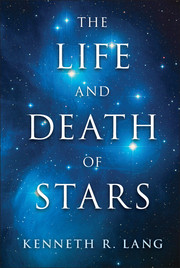Book contents
- Frontmatter
- Contents
- List of Focus Elements
- List of Tables
- Preface
- 1 Light of the Sun
- 2 Gravity and Motion
- 3 Atomic and Subatomic Particles
- 4 Transmutation of the Elements
- 5 What Makes the Sun Shine?
- 6 The Extended Solar Atmosphere
- 7 Comparisons of the Sun with Other Stars
- 8 The Lives of Stars
- 9 The Material Between the Stars
- 10 New Stars Arise from the Darkness
- 11 Stellar End States
- 12 A Larger, Expanding Universe
- 13 Birth, Life, and Death of the Universe
- Quotation References
- Author Index
- Subject Index
- Plate section
5 - What Makes the Sun Shine?
Published online by Cambridge University Press: 05 February 2013
- Frontmatter
- Contents
- List of Focus Elements
- List of Tables
- Preface
- 1 Light of the Sun
- 2 Gravity and Motion
- 3 Atomic and Subatomic Particles
- 4 Transmutation of the Elements
- 5 What Makes the Sun Shine?
- 6 The Extended Solar Atmosphere
- 7 Comparisons of the Sun with Other Stars
- 8 The Lives of Stars
- 9 The Material Between the Stars
- 10 New Stars Arise from the Darkness
- 11 Stellar End States
- 12 A Larger, Expanding Universe
- 13 Birth, Life, and Death of the Universe
- Quotation References
- Author Index
- Subject Index
- Plate section
Summary
Awesome Power, Enormous Times
The Sun is so big, hot, and nearby that it is the brightest object in the daytime sky, warming our lands and lighting our days, even though the Earth intercepts only a modest fraction of the Sun's radiation. When we measure the total amount of sunlight that illuminates and warms our globe and then extrapolate back to the Sun, we find that it is emitting an enormous power of 385.4 million million million million, or 3.828 × 1026, watts. In just 1 second, the energy output of the Sun equals the entire energy consumption of the United States for 1 million years.
The Sun's brilliance is far too great to be sustained perpetually, and no star can shine forever. All things wear out with time. We therefore wonder what heats the Sun and how long that heat will last.
No ordinary fire can maintain the Sun’s steady supply of heat for long periods. If the Sun were composed entirely of coal, with enough oxygen to sustain combustion, it would be burned away and totally consumed in a few thousand years.
In the mid-nineteenth century, the German physicist Hermann von Helmholtz proposed that the Sun’s luminous energy is due to its gravitational contraction. If the Sun were gradually shrinking, the compressed matter would become hotter and the solar gases would be heated to incandescence; in more scientific terms, the Sun’s gravitational energy would be converted slowly into the kinetic energy of motion and heat up the Sun so that it would continue to radiate. This follows from the principle of the conservation of energy, which Helmholtz was one of the first to propose. It states that energy can be neither created nor destroyed; it can only change form.
- Type
- Chapter
- Information
- The Life and Death of Stars , pp. 76 - 101Publisher: Cambridge University PressPrint publication year: 2013



